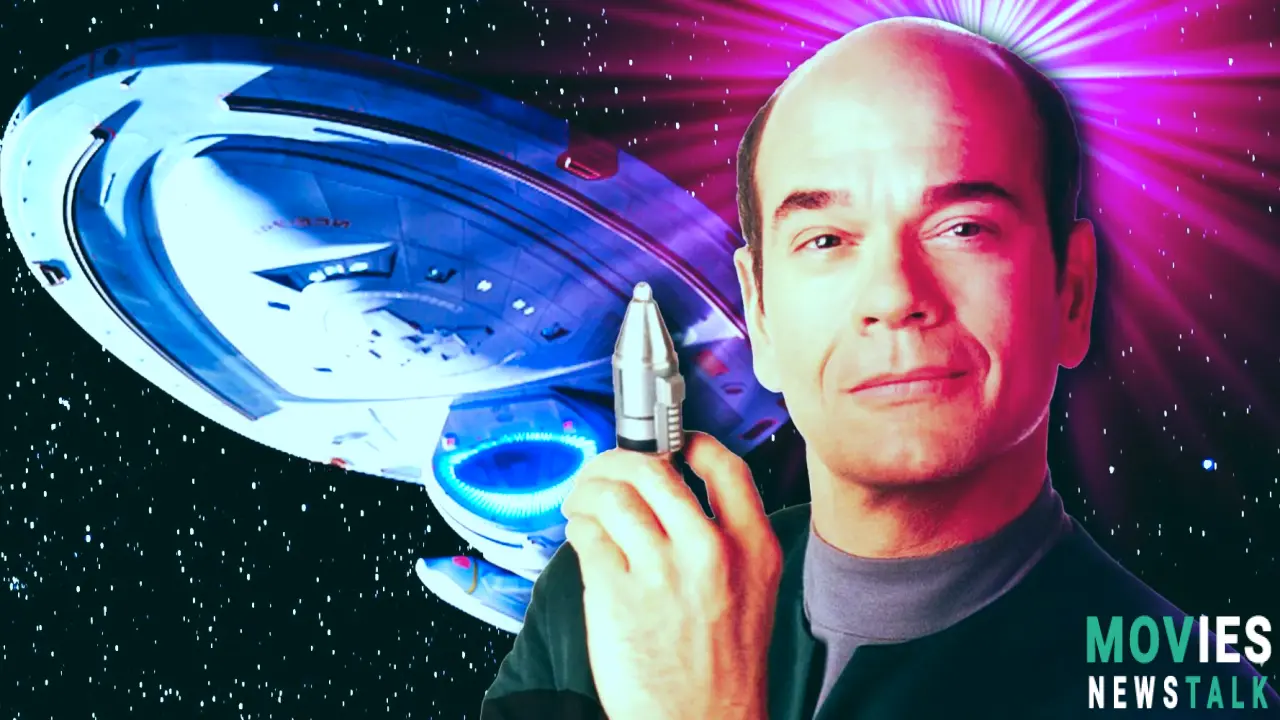Holographic Physicians: The Inspiration for Star Trek
The concept of a hologram doctor, first introduced in the popular science fiction series Star Trek: Voyager, is no longer considered a far-off futuristic dream. Robert Picardo's ground-breaking Emergency Medical Hologram (EMH) serves as an inspiration for contemporary technologies. On the USS Voyager, this virtual doctor took over for the human Chief Medical Officer following the latter's untimely death on the ship's inaugural journey. Trapped in the enormous Delta Quadrant, Voyager was unable to contact Starfleet Command to request more medical personnel. And thus, what started out as a stopgap solution—the EMH—became the chief medical officer over time.
The Impact of Star Trek on Modern Technology
For a very long time, Star Trek has been a source of inspiration for advances in technology. Flip phones were popular in the early 2000s because to the communicators from Star Trek: The Original Series. The iPad got its name from the Personal Access Display Device (PADD) from Star Trek: The Next Generation, which also served as an inspiration for modern mobile tablets. The closest real-world counterpart to the recognizable holodeck from Star Trek is the AR Wall, which is used in film and television production. A hologram doctor may now be communicated with in real time thanks to a Dutch firm called Holoconnects.
Medical Holograms: An Advancement for Star Trek's Voyager Medical
The holographic Doctor from Star Trek: Voyager is a forerunner of today's medical holograms. Doctors and patients can communicate with each other through the Holobox system, a bidirectional communication technology. The live recording of the doctors speaking from their offices is sent to a distant holographic projection box via the internet. As a result, the patient can easily communicate in real time with a 3D hologram doctor from the comfort of their own home. Medical holograms, which make people feel as though they are "in the Delta Quadrant" when it comes to healthcare, are not quite a reproduction of Voyager's EMH but have great promise for individuals who lack access to high-quality medical treatment.
The Future of Holographic Technology: A Trip to the Doctor from Star Trek
In the not too distant future, holographic technology might resemble the Doctor from Star Trek: Voyager. The Doctor aboard Voyager has access to the whole Starfleet Medical database and the expertise of the most highly qualified doctors within Starfleet. Like other holograms in the Star Trek world, these databases control the EMH's behavior until he learns to function outside of his original programming. A medical hologram in the vein of Star Trek: Voyager might one day be possible through the integration of real-time holographic projections with a large language model AI trained on medical datasets. But before entrusting AI with human lives, this progress depends on fully overcoming AI's bias and hallucination problems.
The Disparity Between Reality and Science Fiction
Modern holographic doctors are similar to the holograms of the 23rd century in various ways, even though they are still far from reaching the advanced hologram doctors portrayed in Star Trek: Voyager. The holo-communicator in Star Trek: Discovery's first two seasons used holographic technology to show real-time images of people in far-off places, giving the impression that they were there in person. In the crew quarters and bridges of various Starfleet ships, such as the USS Enterprise, USS Shenzhou, and USS Discovery, there is a two-way holographic communication system. Holo-comms were finally abandoned due to technical difficulties. After complaining about the holo-communicator images and calling them "like ghosts," Captain Christopher Pike (Anson Mount) finally got the system taken off of the USS Enterprise. This offered an explanation for why holograms were not present in Star Trek: The Original Series within the universe.
The Present Holographic Technology's Limitations
As seen in Voyager, holograms from Star Trek's 24th century are made of photonic energy contained in a magnetic containment field, which enables them to communicate with real-world objects and people. Modern hologram technology, on the other hand, depends on images or movies projected onto specially treated glass. Hologram physicians of the future will not be able to do surgery, but they will be able to create the appearance of a 3D presence. However, depending on the severity of the medical emergency, they might offer guidance on basic first aid or patient stabilization, akin to Star Trek: Voyager's Emergency Medical Hologram.

